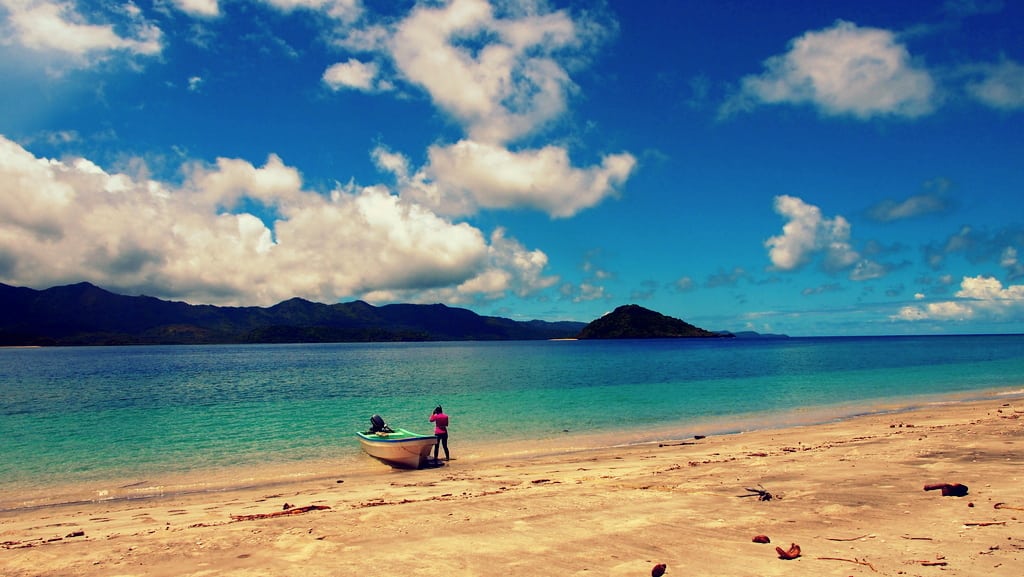The Impact of Climate Change on Small Island Nations and Their Tourism Future

Skift Take
Yesterday we started a series on the impact of climate change on tourism businesses and regions around the world, based on the just released report from United Nations scientific panel Intergovernmental Panel on Climate Change.
The first in the series was the effect of these changes on the coastal and low lying areas.
The second extract in the series is the impact of climate change and global warming on the small island nations around the world. Current and future climate-related drivers of risk for small islands during the 21st century include sea-level rise, tropical and extra-tropical cyclones, increasing air and sea surface temperatures, and changing rainfall patterns. How will this affect tourism businesses?
Some of the language below is the dense officialese of these reports, so we will edit for clarity as needed.
Whilst traditional settlements on high islands in the Pacific were often located inland, the move to coastal locations was encouraged by colonial and religious authorities and more recently through the development of tourism. Now the majority of settlement, infrastructure and development are located on lowlands along the coastal fringe of small islands. In the case of atoll islands, all development and settlement is essentially coastal. It follows that populations, infrastructure, agricultural areas and fresh groundwater supplies are all vulnerable to extreme tides, wave and surge events and sea-level rise.
Population drift from outer islands or from inland, together with rapid population growth in main centres and lack of accommodation space drives growing populations into ever more vulnerable locations. Additionally, without adequate resources and planning, engineering solutions such as shoreline reclamation also place communities and infrastructure in positions of increased risk.
The issue of ‘coastal squeeze’ remains a concern for many small islands as there is a constant struggle to manage the requirements for physical development against the need to maintain ecological balance. Martinique in the Caribbean exemplifies the point, where physical infrastructure prevents the beach and wetlands from retreating landward as a spontaneous adaptation response to increased rates of coastal erosion. Moreover, intensive coastal development in the limited coastal zone combined with population growth and tourism has placed great stress on the coast of some islands and has resulted in dense aggregations of infrastructure and people in potentially vulnerable locations.
Tourism is an important weather and climate-sensitive sector on many small islands and has been assessed on several occasions, including in previous IPCC assessments. There is currently no evidence that observed climatic changes in small island destinations or source markets have permanently altered patterns of demand for tourism to small islands, and the complex mix of factors that actually determines destination choices under a changing climate still need to be fully evaluated. However, there are cases reported that clearly show severe weather-related events in a destination country (e.g. heavy, persistent rainfall in Martinique; Hurricanes in Anguilla) can significantly influence visitors’ perception of the desirability of the location as a vacation choice.
Climate can also impact directly on environmental resources that are major tourism attractions in small islands. Widespread resource degradation challenges such as beach erosion and coral bleaching have been found to negatively impact the perception of destination attractiveness in various locations, for example in Martinique, Barbados and Bonaire.
Similarly dive tourists are well aware of coral bleaching, particularly the experienced diver segment. Therefore more acute impacts are felt by tourism operators and resorts that cater to these markets. Beach erosion may similarly affect accommodation prices in some destinations. Consequently, some countries have begun to invest in a variety of resource restoration initiatives including artificial beach nourishment, coral and mangrove restoration and the establishment of marine parks and protected area.
There is no analysis of how widespread such investments are or their capability to cope effectively with future climate change. The tourism industry and investors are also beginning to consider the climate risk of tourism operations including those associated with the availability of freshwater. Freshwater is limited on many small islands, and changes in its availability or quality during drought events linked to climate change have adverse impacts on tourism operations.
Tourism is a seasonally significant water user in many island destinations and in times of drought, concerns over limited supply for residents and other economic activities become heightened. The increasing use of desalination plants is one adaptation to reduce the risk of water scarcity in tourism operations.
------------------------
Many small islands rely heavily on the foreign exchange from tourism to expand and develop their economies, including the costs of mitigation and adaptation. Tourism, particularly in small islands, often relies on coastal and terrestrial ecosystems to provide visitor attractions and accommodation space. Recognising the relationship between ecosystem services and tourism in Jamaica, Thomas-Hope and Jardine-Comrie (2007) suggest that sustainable tourism planning should include activities undertaken by the industry, that is tertiary treatment of waste, and re-use of water, as well as composting organic material and investing in renewable energy. Gössling and Schumacher (2010) and others who have examined the linkages between greenhouse gas emissions and sustainable tourism argue that the tourism sector (operators and tourists) should pay to promote sustainable tourism, especially where they benefit directly from environmental services sustained by these investments.
Skift’s in-depth reporting on climate issues is made possible through the financial support of Intrepid Travel. This backing allows Skift to bring you high-quality journalism on one of the most important topics facing our planet today. Intrepid is not involved in any decisions made by Skift’s editorial team.





